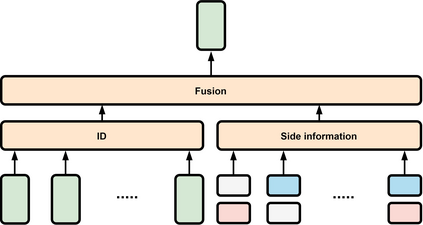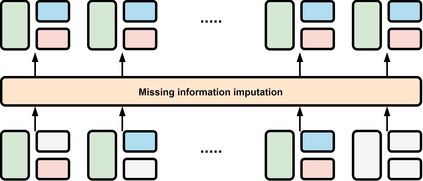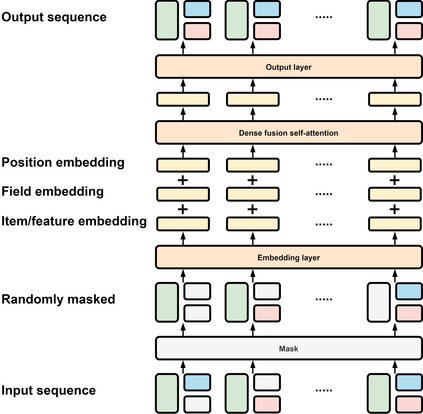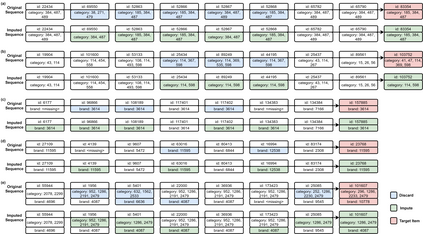Side information is being used extensively to improve the effectiveness of sequential recommendation models. It is said to help capture the transition patterns among items. Most previous work on sequential recommendation that uses side information models item IDs and side information separately. This can only model part of relations between items and their side information. Moreover, in real-world systems, not all values of item feature fields are available. This hurts the performance of models that rely on side information. Existing methods tend to neglect the context of missing item feature fields, and fill them with generic or special values, e.g., unknown, which might lead to sub-optimal performance. To address the limitation of sequential recommenders with side information, we define a way to fuse side information and alleviate the problem of missing side information by proposing a unified task, namely the missing information imputation (MII), which randomly masks some feature fields in a given sequence of items, including item IDs, and then forces a predictive model to recover them. By considering the next item as a missing feature field, sequential recommendation can be formulated as a special case of MII. We propose a sequential recommendation model, called missing information imputation recommender (MIIR), that builds on the idea of MII and simultaneously imputes missing item feature values and predicts the next item. We devise a dense fusion self-attention (DFSA) for MIIR to capture all pairwise relations between items and their side information. Empirical studies on three benchmark datasets demonstrate that MIIR, supervised by MII, achieves a significantly better sequential recommendation performance than state-of-the-art baselines.
翻译:正在广泛使用侧面信息来提高顺序建议模式的有效性。 据说这有助于捕捉各个项目之间的过渡模式。 大部分先前关于顺序建议的工作, 使用侧面信息模型项目ID 和侧面信息。 这只能模拟项目及其侧面信息之间的关系。 此外, 在现实世界系统中, 并非所有的项目特性字段的值都可用。 这伤害了依赖侧面信息的模型的性能。 现有方法往往忽视缺失项目特性字段的背景, 并填充这些功能字段的通用或特殊值, 例如, 未知值, 可能导致次优性业绩。 为解决使用侧面信息的顺序建议者的局限性, 我们定义了连接侧面信息的方法, 并缓解了侧面信息及其侧面信息的问题。 在现实世界系统中, 即缺少信息估算( MII ), 随机掩盖了某个特定项目序列中的某些功能字段, 包括项目标识, 然后迫使一个预测模型来恢复这些功能。 通过将下一个项目视为缺失的特性字段, 可将顺序建议拟订为 MII 的特例 。 我们提议一个顺序建议模型, 称之为侧边端建议, 连接边边边边端信息信息信息信息, 边端数据, 并同时显示自我定位的自我定位的基底基面关系, 。














